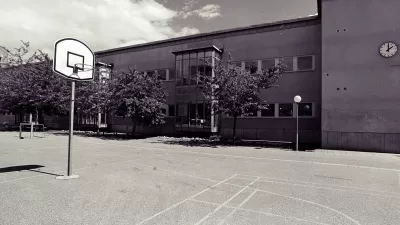City and county leaders shared their plans for millions in new annual revenue at the 2017 VerdeXchange Conference.

After a comprehensive survey revealed a serious lack of quality open space in Los Angeles County, voters overwhelmingly approved a November ballot measure providing $93 million a year for existing and new parks countywide.
Los Angeles City Councilmember David Ryu and Planning Commissioner Richard Katz joined Santa Monica Mountains Conservancy Chair Irma Muñoz and Trust for Public Land’s Tori Kjer at the recent VerdeXchange Conference (VX2017) to envision how the 88 cities, unincorporated areas, and community partners of Los Angeles County will take advantage of this opportunity.
They explain that the parks assessment grounded claims of need across the county in real data, providing a basis for the equitable distribution of funding. A disparity in access to quality open space was a key finding of the survey.
The new funding will prioritize multi-agency cooperation and public-private partnerships, as well as multi-benefit projects. Those could be parks that include free community gardens, or that contribute to the county's overall climate resilience by acting as stormwater capture and treatment facilities.
It will also go to projects that haven’t been traditionally thought of as fitting into park measures: beaches, watersheds, and real multi-benefit projects. We can absolutely get that slide and those swings in that park, but we can also get stormwater parks, so that we’re fulfilling multiple purposes with our open spaces.
The city of Los Angeles—which recently secured its own new parks funding from a reformed developer fee—also plans to pursue joint-use arrangements with schools that have open space or playgrounds.
"It's all about giving priority to projects that stretch every dollar by leveraging partners, state funds, county funds, and federal funds," Councilmember Ryu explains.
FULL STORY: Parks and Placemaking: How Will LA Spend $93 Million Annually in Park Funding?

Study: Maui’s Plan to Convert Vacation Rentals to Long-Term Housing Could Cause Nearly $1 Billion Economic Loss
The plan would reduce visitor accommodation by 25,% resulting in 1,900 jobs lost.

North Texas Transit Leaders Tout Benefits of TOD for Growing Region
At a summit focused on transit-oriented development, policymakers discussed how North Texas’ expanded light rail system can serve as a tool for economic growth.

Why Should We Subsidize Public Transportation?
Many public transit agencies face financial stress due to rising costs, declining fare revenue, and declining subsidies. Transit advocates must provide a strong business case for increasing public transit funding.

How to Make US Trains Faster
Changes to boarding platforms and a switch to electric trains could improve U.S. passenger rail service without the added cost of high-speed rail.

Columbia’s Revitalized ‘Loop’ Is a Hub for Local Entrepreneurs
A focus on small businesses is helping a commercial corridor in Columbia, Missouri thrive.

Invasive Insect Threatens Minnesota’s Ash Forests
The Emerald Ash Borer is a rapidly spreading invasive pest threatening Minnesota’s ash trees, and homeowners are encouraged to plant diverse replacement species, avoid moving ash firewood, and monitor for signs of infestation.
Urban Design for Planners 1: Software Tools
This six-course series explores essential urban design concepts using open source software and equips planners with the tools they need to participate fully in the urban design process.
Planning for Universal Design
Learn the tools for implementing Universal Design in planning regulations.
City of Santa Clarita
Ascent Environmental
Institute for Housing and Urban Development Studies (IHS)
City of Grandview
Harvard GSD Executive Education
Toledo-Lucas County Plan Commissions
Salt Lake City
NYU Wagner Graduate School of Public Service





























